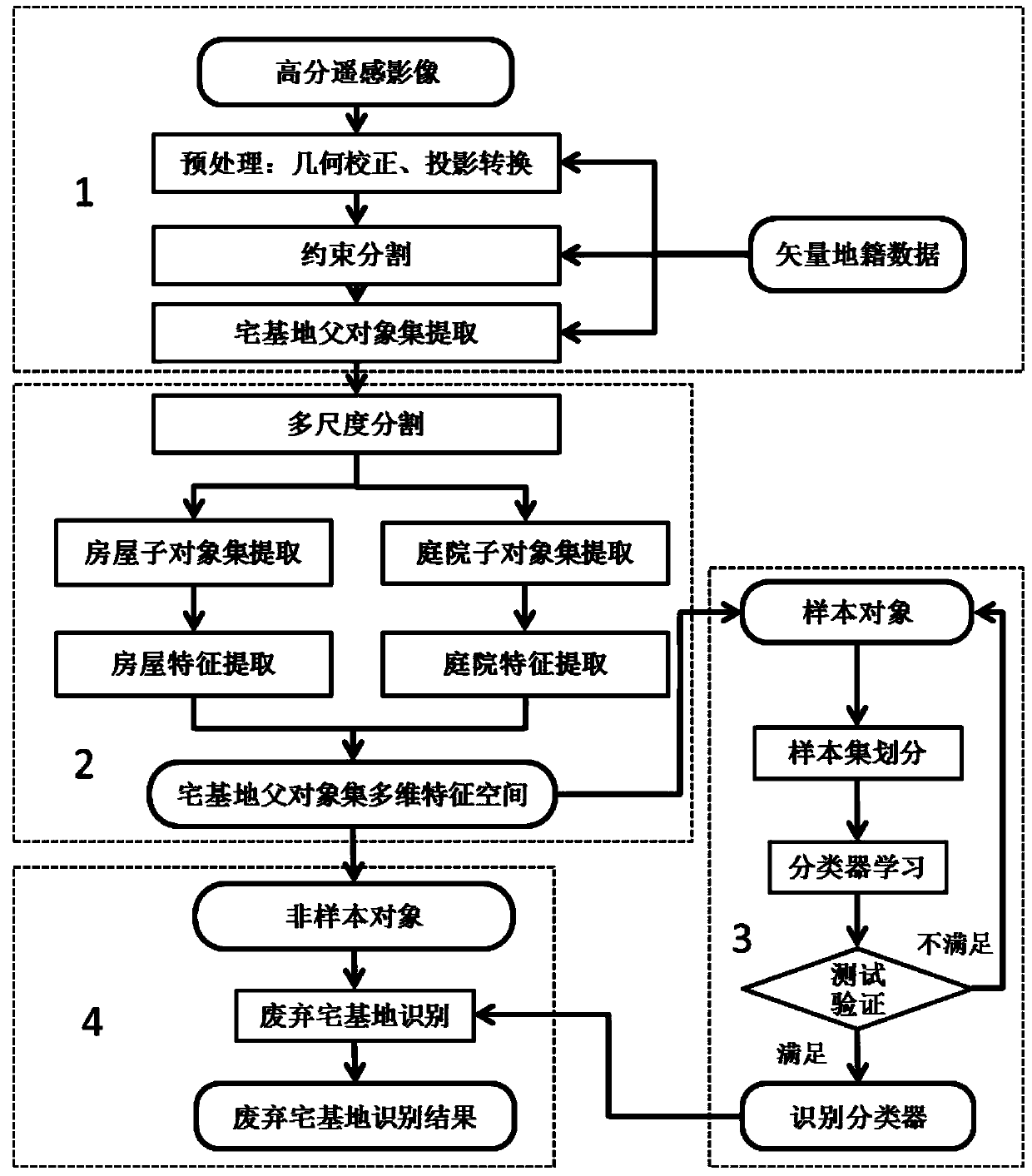Automatic waste empty house site information extraction method based on remote-sensing image
A remote sensing image and information extraction technology, applied to instruments, character and pattern recognition, computer components, etc., can solve problems such as misjudgment of empty and abandoned homesteads, low accuracy of results, and difficulty in realizing full automation
- Summary
- Abstract
- Description
- Claims
- Application Information
AI Technical Summary
Problems solved by technology
Method used
Image
Examples
Embodiment Construction
[0046] The method for extracting empty and abandoned homestead information of the present invention will be described in detail below in conjunction with specific embodiments.
[0047] In this embodiment, the effect used is a high-resolution remote sensing image. In order to be able to clearly extract the characteristics of the house courtyard, the resolution of the high-resolution remote sensing images used should be within 0.5 meters, and the accuracy of the cadastral data should be within this range.
[0048] Such as figure 1 As shown, the empty and waste homestead extraction method in the present embodiment is mainly divided into the following four main parts:
[0049] (1) Homestead object extraction, which includes the following three sub-steps:
[0050] M1S 1 data preprocessing, that is, geometric correction of high-resolution images, and projection transformation based on the vector cadastral data projection space. Satellite remote sensing images, aerial remote sensi...
PUM
 Login to View More
Login to View More Abstract
Description
Claims
Application Information
 Login to View More
Login to View More - R&D
- Intellectual Property
- Life Sciences
- Materials
- Tech Scout
- Unparalleled Data Quality
- Higher Quality Content
- 60% Fewer Hallucinations
Browse by: Latest US Patents, China's latest patents, Technical Efficacy Thesaurus, Application Domain, Technology Topic, Popular Technical Reports.
© 2025 PatSnap. All rights reserved.Legal|Privacy policy|Modern Slavery Act Transparency Statement|Sitemap|About US| Contact US: help@patsnap.com



